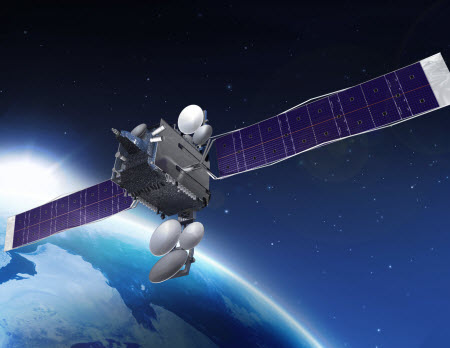GCI Inks $150 Million Satellite Capacity Partnership with Intelsat
Deal will help create tri-band network to cover entire state

Alaskan cable and telecom provider GCI said it has entered into a $150 million partnership with Intelsat to expand its geosynchronous satellite capacity to meet growing demand in rural areas across the state.
According to GCI, the deal provides continued access to Intelsat’s C-band and Ku-band capacity -- already part of GCI’s portfolio -- but also provides new access to Ka-band spectrum across the state.
As part of the deal Intelsat will supply a multiple-satellite solution over an enhanced managed earth station platform and a tri-band (C, Ku, and Ka) network that will cover the entire state of Alaska.
In a press release, GCI CEO Ron Duncan said the Intelsat deal will nearly quadruple the company’s available satellite capacity and is part of a much broader rural connectivity strategy that also includes its ambitious AU-Aleutians Fiber Project.
“Today’s announcement is another example of GCI’s continued commitment to our rural customers and our willingness to make the investment necessary to serve small, remote communities across the state,” Duncan said in the press release.
Also Read: GCI Targets 17 Rural Communities for 2021 Broadband Upgrades
GCI is Alaska’s largest telecommunications company and has delivered satellite-based connectivity for 35 years. The company said the Intelsat deal will ensure it has sufficient capacity to meet the needs of rural customers like regional tribal health care providers, school districts, government agencies, and businesses.
Multichannel Newsletter
The smarter way to stay on top of the multichannel video marketplace. Sign up below.
“What sets GCI’s satellite service apart is that we manage the network from end to end, combining Intelsat’s satellite capacity with GCI’s satellite engineering and remote logistics know-how,” GCI SVP of corporate development Billy Wailand said in a press release.
Also Read: GCI Commits to Deploy 2 Gbps Service in Alaska in 2022
The agreement also adds another tool in GCI’s broadband service approach, which includes a mix of fiber, microwave, GEO satellites and eventually low earth orbit (LEO) satellites. GCI has been actively engaged in talks with LEO providers including SpaceX, OneWeb, and Telesat.
Also Read: Cable’s Last Frontier
“We are confident that LEOs will become an important part of GCI’s toolkit over time,” Wailand said in the release. “But before we begin encouraging some of our customers to consider a move to LEO satellites, we need to be confident in their performance and ability to meet our customers’ current and future demands. Our partnership with Intelsat provides GCI and our customers with an immediate solution that addresses capacity needs today, as well as the ability to integrate future technologies like LEOs when they become ready.”
Mike Farrell is senior content producer, finance for Multichannel News/B+C, covering finance, operations and M&A at cable operators and networks across the industry. He joined Multichannel News in September 1998 and has written about major deals and top players in the business ever since. He also writes the On The Money blog, offering deeper dives into a wide variety of topics including, retransmission consent, regional sports networks,and streaming video. In 2015 he won the Jesse H. Neal Award for Best Profile, an in-depth look at the Syfy Network’s Sharknado franchise and its impact on the industry.

